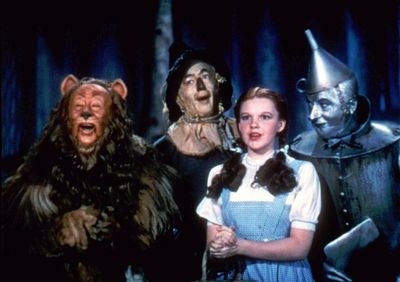And 10 more make 100

It takes a long time to run down a list of 100 films, especially when those films are supposed to the ones you need to see before you die.
But with this column, I complete my list (you can catch the full 100 on my blog at www.spokane7.com/blogs /moviesandmore).
As with the other inclusions, all of which I divided into lists of 10, I’ve followed a theme. This final list involves films with characters who find themselves caught in an essential conundrum, not always of their own making.
I call it Living an Illusion.
91, “Dances With Wolves” (1990): Kevin Costner directed and starred in this film about an American soldier, still affected by his service in the Civil War, who comes to think differently about how the Army is treating the Indians of the Great Plains.
92, “Jurassic Park” (1993): All John Hammond (Richard Attenborough) wanted to do was to create a place where dinosaurs could roam. What he got, thanks to Steven Spielberg, was a park full of murderous velociraptors and T. Rexes.
93, “Pan’s Labyrinth” (2006): Mexican director Guillermo del Toro knows that childhood itself is an illusion. So when he has a child witness something as horrific as the Spanish Civil War, it should come as no surprise that she will see it in nightmarish terms.
94, “Midnight Cowboy” (1969): Self-delusion is something we all engage in. In this adaptation of James Leo Herlihy’s novel, director John Schlesinger shows us how Joe Buck (Jon Voight) and Ratso Rizzo (Dustin Hoffman) try to survive theirs.
95, “The Wizard of Oz” (1939): How many of us have wished to escape a bad situation by clicking the heels on our red-ruby slippers? Victor Fleming’s fantasy shows us the wonder that exist on the other side of the rainbow.
96, “Chariots of Fire” (1981): If the unseen restraints of Britain’s class system didn’t lurk at the very heart of this examination of the 1924 Olympics, it would be only because Hugh Hudson’s dreamlike style – all slo-mo and Vangelis score – mask them.
97, “The Assassination of Jesse James by the Coward Robert Ford” (2007): Even so-called heroes aren’t always the great men we think they are. This is the lesson that, thanks to director Andrew Dominik, Robert Ford (Casey Affleck) learns too late.
98, “Dr. Strangelove: Or How I Stopped Worrying and Learned to Love the Bomb” (1964): The notion that we could survive nuclear war has always been a topic for debate. If books by, say, Nevil Shute or Cormac McCarthy don’t make the ridiculousness of that argument well enough, this Stanley Kubrick film certainly does.
99, “Some Like It Hot” (1959): This Billy Wilder film might take the notion of living an illusion most literally. Other than its essential qualities, though, it belongs here because of Joe E. Brown’s willing refusal to face reality.
100, “The Children of Paradise” (1945): One of the great films of the 20th century, this Marcel Carné study of life in 1830s Paris is famous for how it explores the meaning of love. But its very making, which occurred during German occupation of World War II, is a testament to the enduring nature of art at all costs.
That’s the list. While I don’t call these 100 films the greatest ever made, I do think that each one has something to offer all students of great cinema.
If nothing else, it’s a place to start the debate over just what the word cinema even means in this ever-evolving era of throwaway Hollywood product.